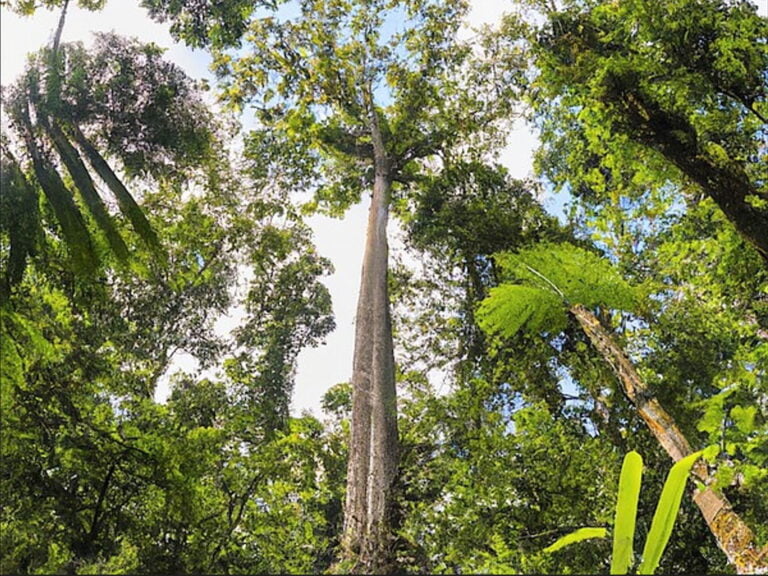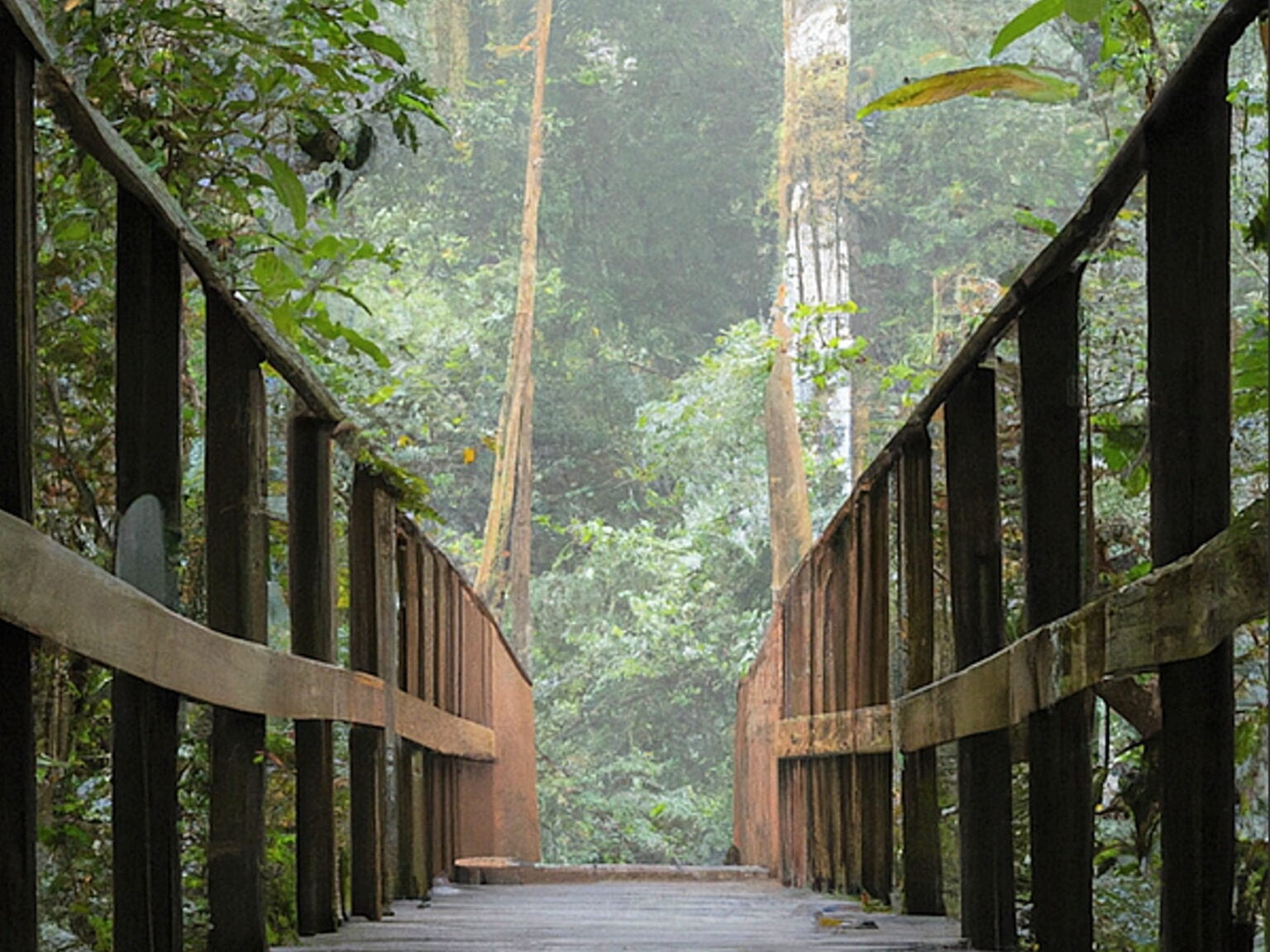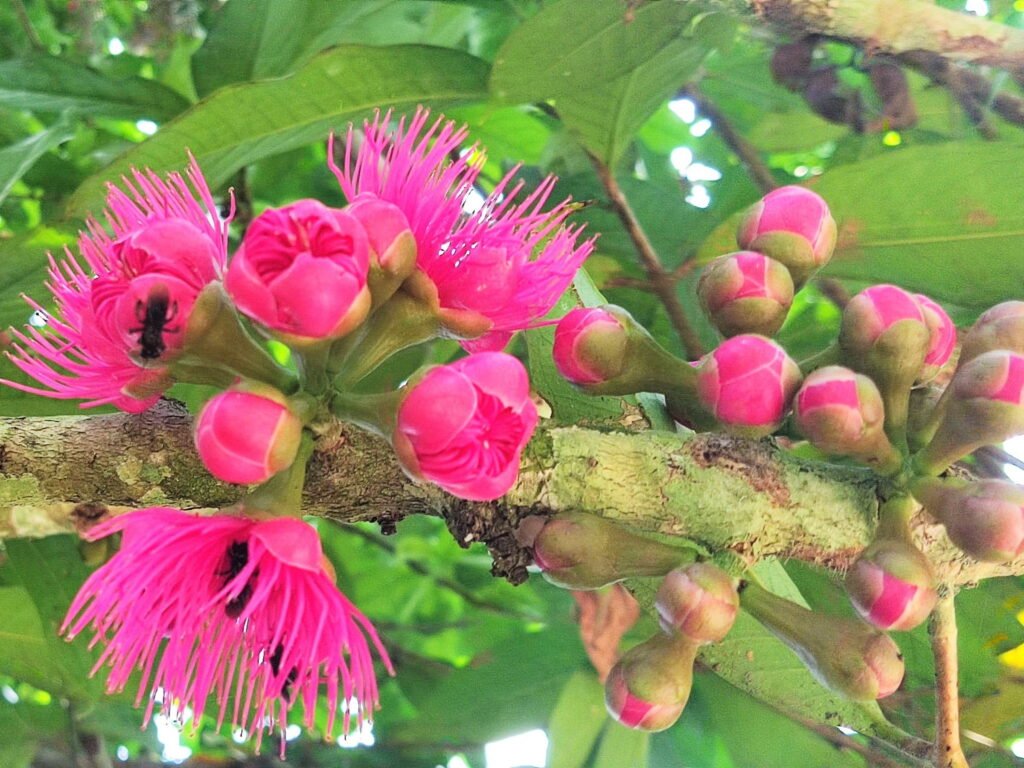Amazon rainforest
“Did you know that the white haze above the mountains is moisture that the trees give off?
The trees only use about 10% of the water they absorb.
They excrete the remaining 90% through their leaves, which turn into rain.
This is why one speaks of a rainforest”.

The 4 layers
• The emergent layer: the tallest and oldest trees stand watch over the rest of the forest, providing habitat for large birds and primate species.
• The Canopy: Between 50 and 90% of a rainforest’s species live in the canopy. Leaves take advantage of the bright sun here to power the forest’s rapid growth.
• The Understory: Dark and glomy, the understory is shielded from the weather above, making it a good nursery for young saplings.
• The Forest Floor: Bacteria, fungi, and insects rapidly decompose organic matter, recycling nutrients for use by other organisms.

Some rainy facts
• Rainforests are so densely packed with vegetation that a drop of rain falling from the forest’s emergent layer can take 10 minutes to reach the forest floor.
• Tropical rainforests are so warm and moist that they produce as much as 75% of their own rain through evaporation and transpiration.
• Rainforests help maintain the world’s water cycle. More than 50% of the precipitation striking a rainforest is returned to the atmosphere by evapotranspiration, helping to regulate healthy rainfall around the planet.
• The rainforests also store a considerable percentage of the world’s freshwater, with the Amazon Basin alone storing one fifth.
Some forest facts
• The earth’s oldest ecosystem is the rainforest. Some rainforests have been around for approximately 70 million years. The Amazon Rainforest has been around for at least 55 million years.
• The Amazon is the world’s largest tropical rainforest. Covering over 5.5 million square kilometers, it’s so big that the UK and Ireland would fit into it 17 times.
• There are more trees in the Amazon than stars in the Milky Way.
• Around 400–500 indigenous Amerindian tribes call the Amazon rainforest home. It’s believed that about fifty of these tribes have never had contact with the outside world!
Medicinal plants
• The Amazon Rainforest is home to an estimated 40,000 plant species, many of which have medicinal properties that have been used for centuries by indigenous communities.
• It is estimated that less than 1% of the plant species in the Amazon Rainforest have been studied for their medicinal properties.
• Many modern medicines, including drugs for cancer, heart disease, and HIV, have been derived from rainforest plants.
• The loss of the Amazon Rainforest due to deforestation threatens not only the survival of these medicinal plants but also the health and well-being of indigenous communities and the world at large.
What would happen if the Amazon Rainforest would disappear?
• The Amazon Rainforest produces 20% of the world’s oxygen and is often referred to as the “lungs of the earth.”
• Indigenous communities that depend on the rainforest for their livelihoods and way of life would be displaced.
• The loss of the rainforest’s potential medicines would have major implications for global health.
• The Amazon Rainforest is a key regulator of global weather patterns, and its disappearance would likely have far-reaching consequences for climate and weather systems.
Hopefully we provide you with enough information to see why its is important to help us save the Amazon rainforest!





